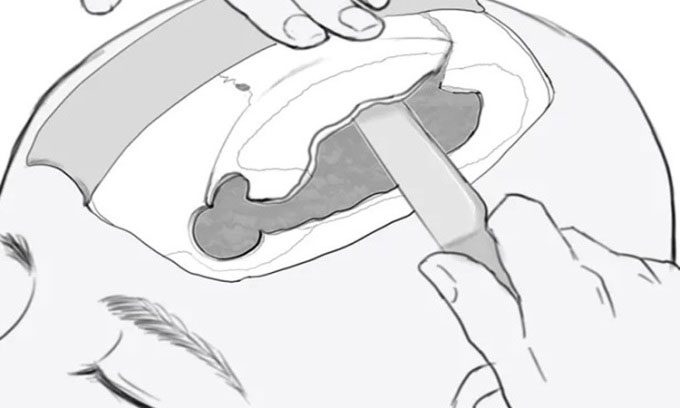Intact Skull from Thousands of Years Ago Shows Signs of Recovery After a Complex Surgery Performed by a Shaman in Late Bronze Age.

The skull of a man in the Yanghai cemetery has a surgical hole in the left corner. (Photo: Texas A&M University).
Researchers from Texas A&M University have unearthed evidence of a complex ancient brain surgery in Xinjiang, China. The intact skull shows signs of surgery, including a drilled hole in the skull to treat a head injury. The research team speculates that the individual who performed the procedure 2,700 years ago was a shaman. The findings published in the journal Archaeological and Anthropological Sciences indicate that shamans of that time could conduct brain surgeries, with evidence suggesting that the patient survived for at least 8 weeks post-operation, as reported by Interesting Engineering on November 6.
The skull was discovered in the Yanghai cemetery in Xinjiang, China, where shamans were quite prevalent during the late Bronze Age. It belonged to a man aged between 30 and 35. In the study, scientists investigated the unusual wound and surgical process on the drilled skull of the adult male who lived during the late Bronze Age (circa 800 – 750 BC).
Skull surgery was performed for various purposes, including treating head injuries, relieving intracranial pressure, or addressing certain syndromes. The man exhibited signs of skull drilling. Examination results revealed that the patient suffered injuries caused by a blunt object on the left side of the head. Subsequently, the shaman performed a craniotomy, which involved drilling the skull and creating a bone flap to treat a hematoma (a condition where blood leaks outside of blood vessels and forms a clump in surrounding tissue).
Researchers were surprised to find that the surgical site showed signs of healing, indicating that the patient had survived for at least 8 weeks after the surgery. Additionally, the complex procedure also helped alleviate pressure on the brain, demonstrating the capabilities of ancient shamans.


















































